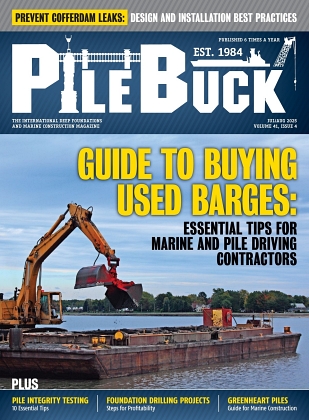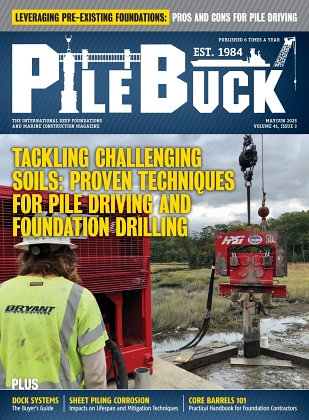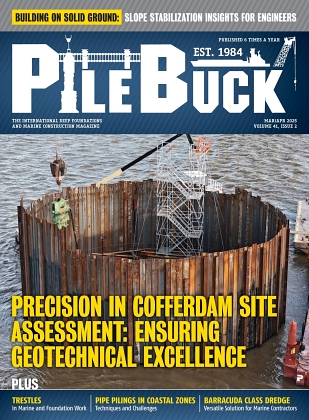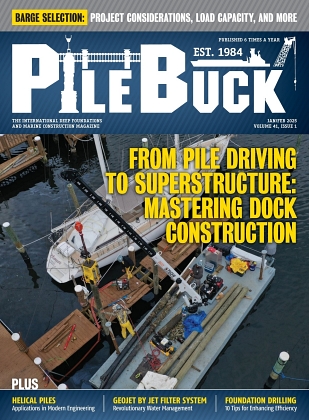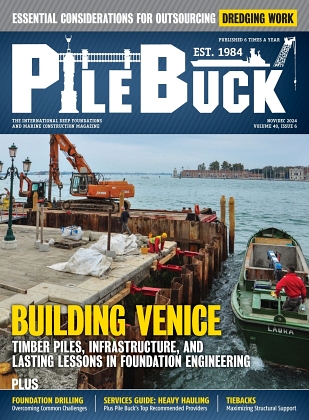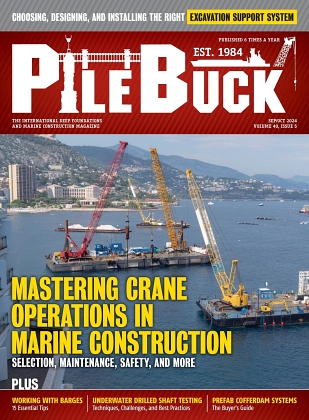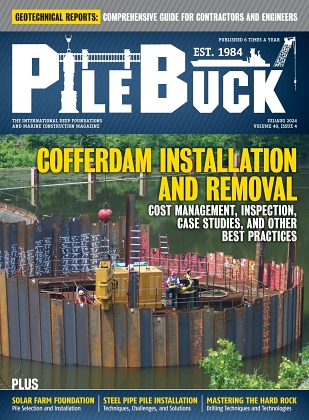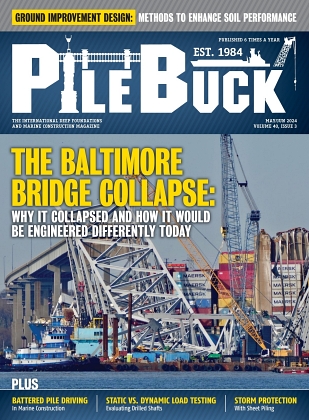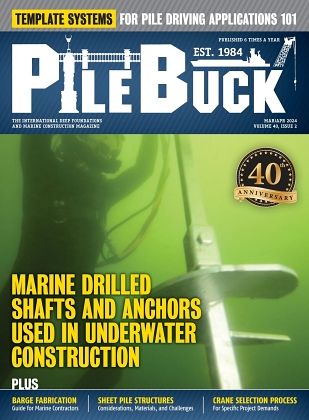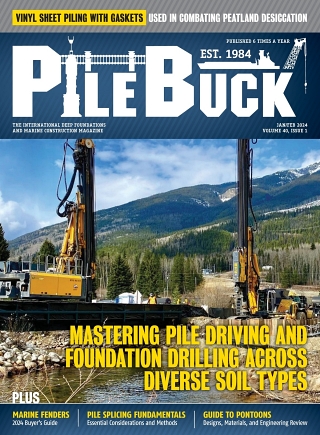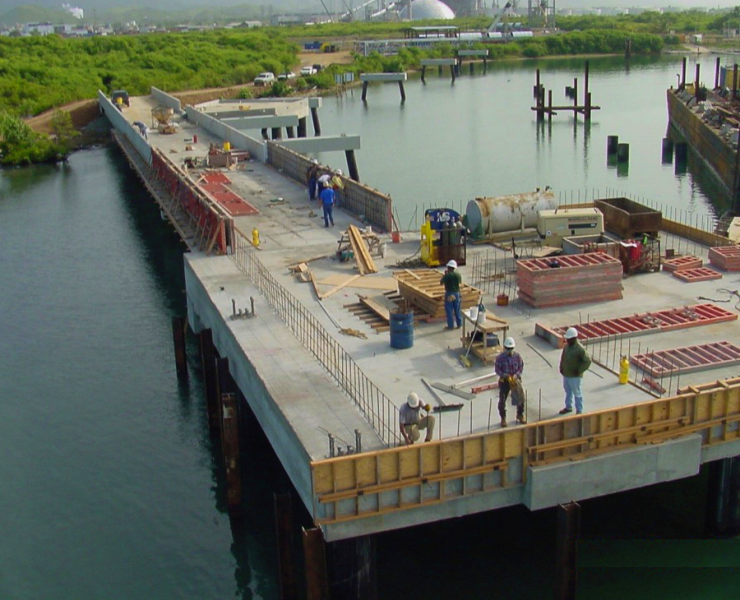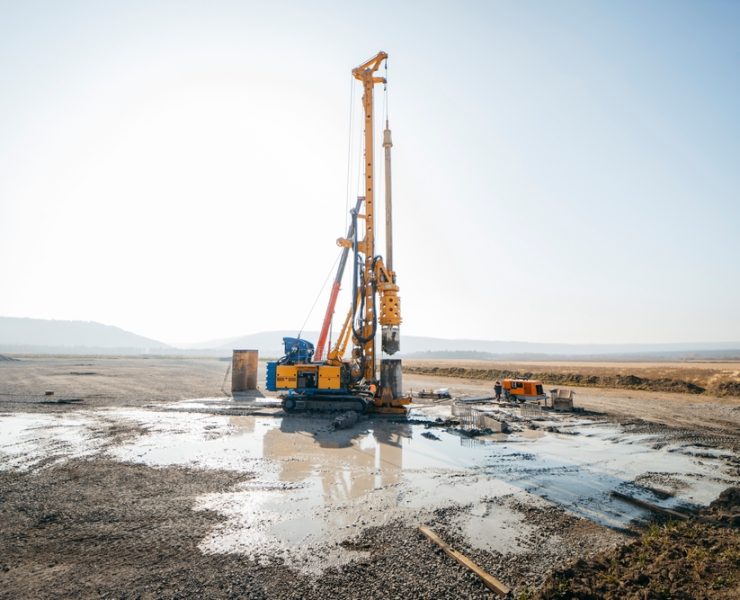Continuous Flight Augers: Optimizing Soil Displacement in Piling Operations
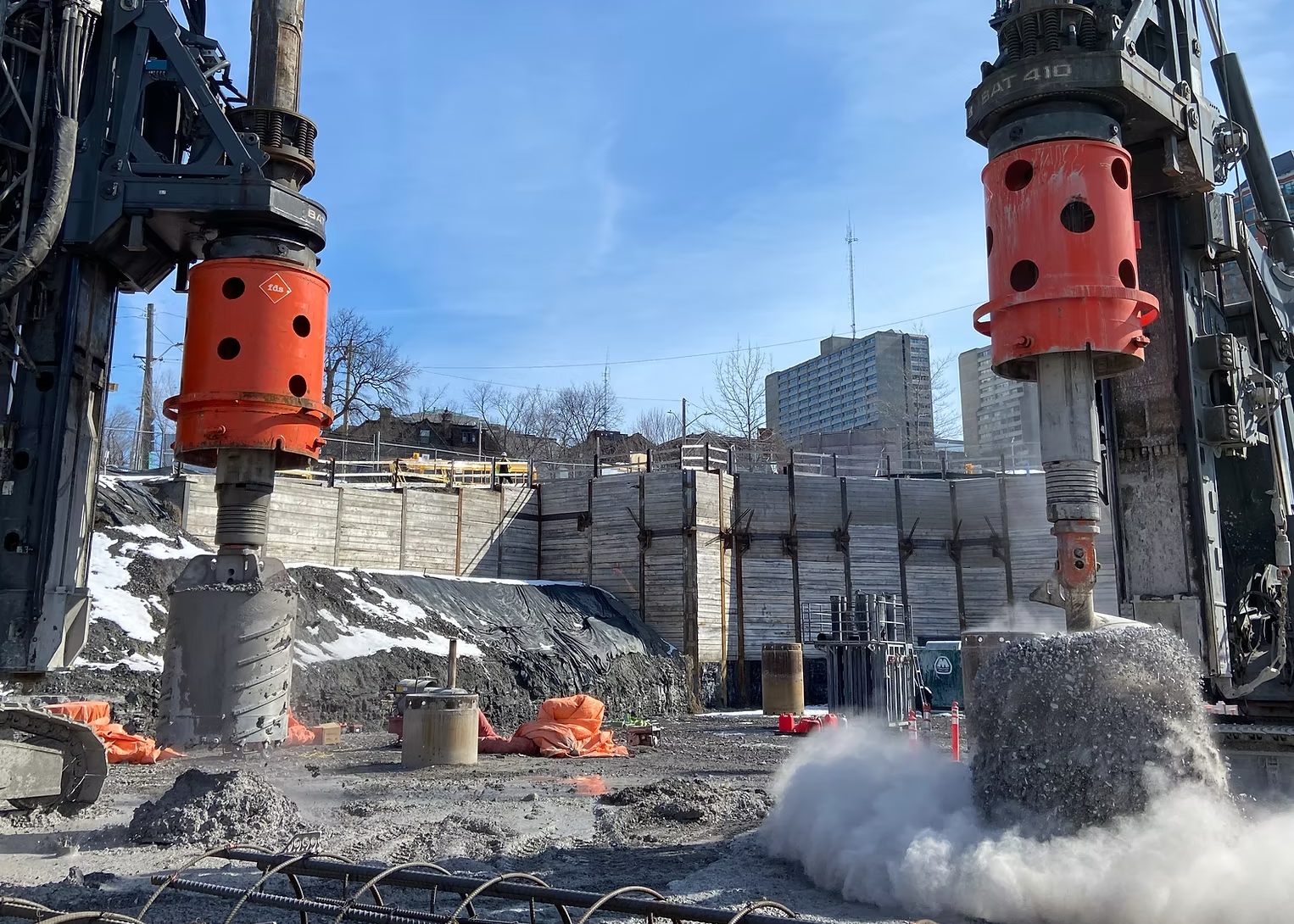
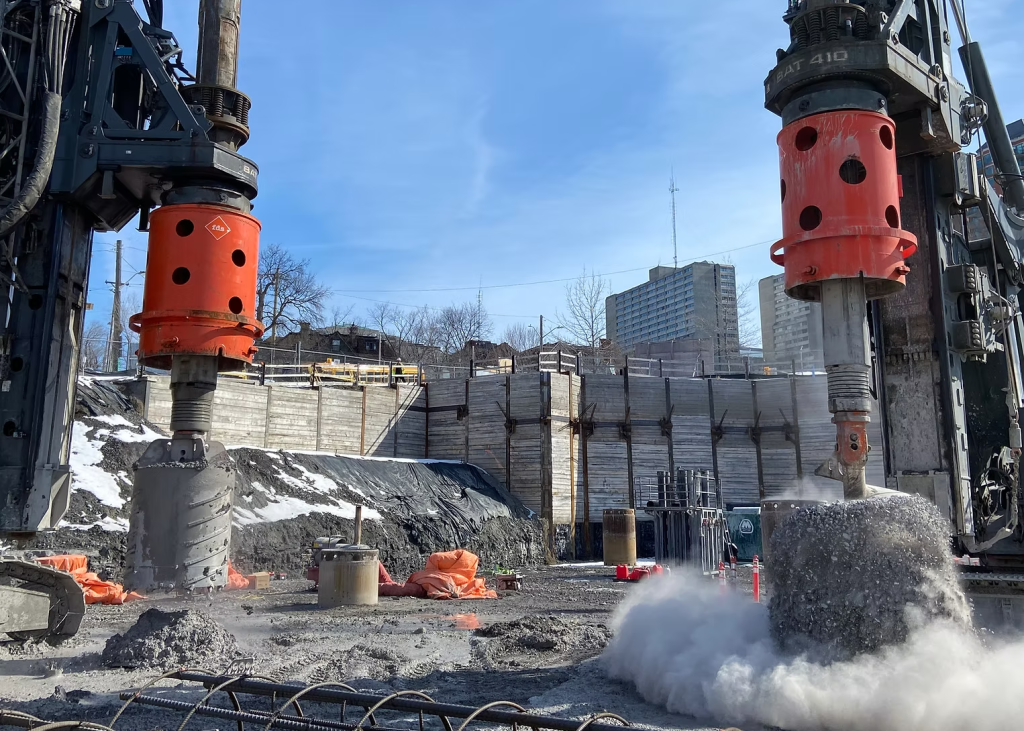
The continuous flight auger method is a widely adopted approach for creating cast in place deep foundation piles in soil profiles ranging from cohesive clays to loose granular deposits. The process begins with drilling a hollow stem auger into the ground until the target depth is reached. As the auger is withdrawn, concrete is pumped under controlled pressure through the hollow stem, filling the bore as the tool rises. Reinforcement is inserted immediately after concreting while the material remains sufficiently fluid.
Because drilling and concrete placement occur in a single continuous operation, the method eliminates the need for temporary casing or slurry support in many soil conditions. This reduces installation steps and lowers the overall disturbance to the surrounding ground. The auger flights maintain bore stability during penetration and bring excavated soil upward to the surface, allowing the concrete column to replace the soil volume efficiently during withdrawal.
Soil Displacement Mechanics in CFA Piling
Although the term displacement may suggest lateral soil movement, in continuous flight auger installation the focus is on controlled removal of soil and replacement with concrete in a way that preserves bore stability. The auger acts as both a drilling tool and temporary support structure. As the screw rotates, soil travels along the flights to the surface. When concrete is introduced through the hollow stem, the column of fluid mix fills the bore from bottom to top while the auger is lifted.
The continuous nature of this sequence limits the exposure of the open bore to surrounding soil pressures. This minimizes the potential for collapse or deformation of the shaft, especially in soils where stability might be sensitive to changes in pore pressure or vibration. The method provides a consistent and predictable soil removal and replacement cycle which promotes uniform pile quality.
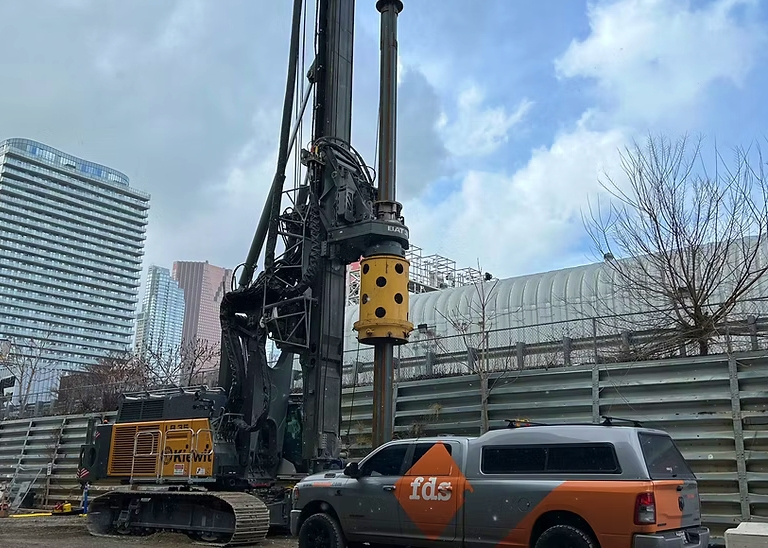
Advantages of CFA Piling for Soil Replacement
Reduced Disturbance and Minimal Vibration
One of the most significant advantages of the CFA system is its quiet and low vibration operation. This quality is especially valuable in urban sites, areas with sensitive structures or projects located near utilities that could be affected by high impact or vibratory methods. Since the soil is lifted by the auger flights rather than displaced laterally, adjacent structures benefit from reduced movement and stress during drilling.
The absence of impact driving reduces noise as well. This allows contractors to operate within restricted work zones without generating disturbance that might breach local noise policies or cause disruption to neighbors.
Adaptability to Varied Soil Profiles
Continuous flight auger piles can be installed successfully in a wide range of soil types including clays, silts, sands, gravels and even weak rock layers. The equipment can also reach significant depths depending on rig capacity and site conditions. This versatility makes the method practical for both small footprint urban foundations and large scale infrastructure projects with variable subsurface layers.
The ability of the auger to penetrate mixed strata while maintaining bore support provides confidence that the installed pile will meet design parameters. Contractors can adjust auger diameter, flight configuration and torque capacity of the rig to suit the geotechnical demands of the site.
Speed and Productivity Advantages
CFA piling is known for efficient production cycles. Because drilling, concreting and reinforcement placement occur in a smooth sequence, the number of steps required is lower than many traditional bored pile methods. This increases the number of piles that can be installed per shift, contributing to lower overall project cost.
The reduced need for support fluids, casing or additional excavation work also cuts material and disposal costs. With fewer components to manage, crews can maintain steady progress through the pile schedule.
Optimizing Soil Displacement Through Equipment and Monitoring
Rig Selection and Tooling Considerations
Choosing the correct rig capacity, torque rating, auger diameter and flight shape is essential for creating piles that achieve the desired soil replacement and structural performance. Larger rigs with higher torque can penetrate dense soils and occasional obstructions more effectively.
This is also where your first backlink fits naturally. Firms sourcing high performing CFA tooling often rely on foundation drilling tools that match the soil and depth requirements of the project.
Importance of Monitoring and Quality Assurance
Modern CFA piling benefits from data driven control systems that track penetration rate, auger rotation, drilling depth, concrete pressure and auger extraction speed. These parameters verify that the bore is filled continuously and that the concrete is placed without gaps or voids.
Instrumentation helps crews detect changes in soil conditions before they affect pile quality. For example, a sudden drop in torque may indicate a softer layer while increased resistance might reflect gravel or denser material. Monitoring allows operators to adjust extraction speed to maintain positive pressure during concreting which is fundamental to the CFA process.
Site Conditions and Groundwater Influence
Groundwater can introduce challenges if not properly managed during CFA operations. Water bearing soils can weaken the bore if concrete pressure and withdrawal speed are not coordinated correctly. Although CFA methods handle many wet conditions effectively, sites with very high groundwater flow may require modified procedures to maintain stability.
Soil investigation remains the foundation for determining the right approach. When the subsurface profile is well understood, contractors can choose auger size, concrete mix design and monitoring thresholds that suit the anticipated soil behavior.

Application Scenarios
Urban Developments and Sensitive Locations
CFA piles are frequently used in dense commercial districts and residential areas where disturbance must be minimized. The quiet operation and steady drilling sequence support construction close to existing foundations and public infrastructure.
Retaining Walls and Excavation Support
Continuous flight augers are effective in constructing contiguous and secant pile walls for excavation support. Because the method provides controlled soil removal and rapid concrete placement, retaining structures can be formed with consistent alignment and compressive strength.
Infrastructure and Variable Soil Projects
Infrastructure projects that span long corridors or variable soil profiles benefit from the adaptability of CFA methods. Even when soils shift between cohesive and granular layers, the auger can maintain consistent drilling characteristics and reliable soil replacement.
Equipment Selection and Pile Performance
Selecting tools and machinery that align with the CFA method is essential for predictable soil displacement. Augers, coupling systems, wear components and pressure monitored concrete delivery hoses all influence the stability of the bore and the quality of the installed pile.
This provides an ideal placement for your second backlink. Contractors often evaluate piling equipment solutions that support the reliability, efficiency and longevity of their drilling operations.
Continuous flight auger piling continues to be a trusted solution for projects that require efficient soil displacement, minimal disturbance and rapid construction cycles. Its combination of bore stability, quiet drilling performance and adaptability across soil types gives contractors a dependable method for deep foundations. By selecting the right equipment, applying thorough monitoring and understanding site specific ground conditions, the CFA method can deliver strong structural results while maintaining predictable and cost effective operations.


